Approaching PAP (Port au Prince Airport), the view out the window wasn't quite what I expected. You know how when you fly into just about any major city airport, the buildings around the airport tend to be nice, inviting and otherwise business and/or tourist oriented?

Not so, Port au Prince. In fact, other than the terminals, most of the buildings around the airport were houses. And, as you can see in the photo, these aren’t your nice manicured neighborhoods. The first thing that greets you when you land is poverty. The last thing you see as you leave is poverty. It’s in front of you at every turn. Yes, there are places where the wealthy can get away from it. But one cannot travel around Haiti without being confronted with poverty.
This is why I was in Haiti. It was through Jean Rony's pursuit to get aid for his people that I met him. But that's a part of the story that will have to wait. I will say that we've become good friends and through these efforts he was able to come to the US for a couple of weeks last spring. More on that later.
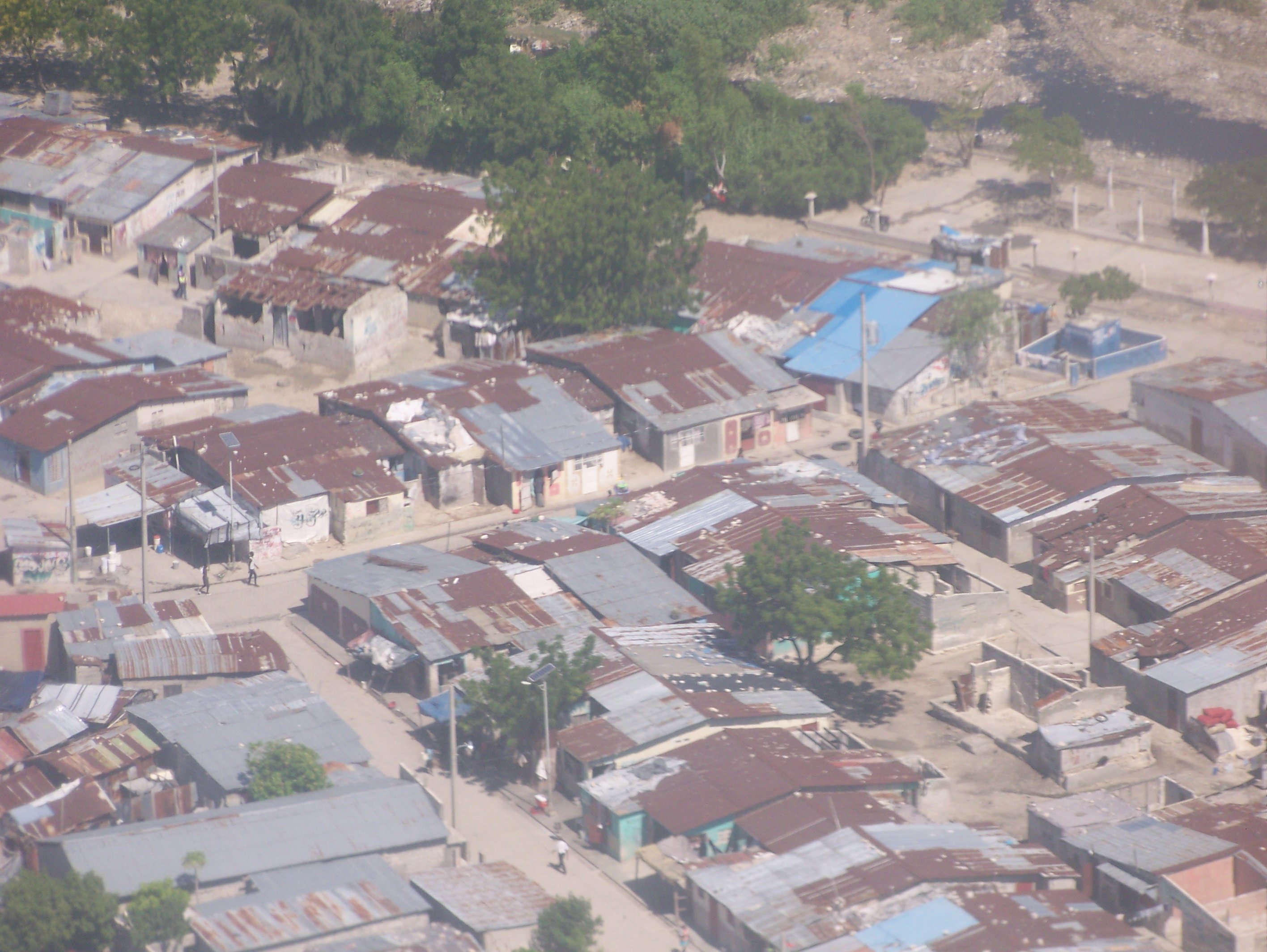
One problem with poverty all over the world is water. Even on a tropical island, water is a major issue. There are many reasons for this, though one of the most poorly understood may be the loss of groundwater.
Groundwater
Most of us see the degradation mentioned in the previous articles and think nothing of it. We think it’s just part of the natural landscape, failing to see it for the destruction it is. Yet, buried beneath it, things are much worse than they appear.
Water is always being pulled by gravity, including below the surface. Subterranean water generally, depending on subterranean rock, clay, etc., moves with the slope of the land, but usually not as steeply as the grade. It is this movement that eventually can lead to springs and shallow water tables that are typical in the foothills of mountains.
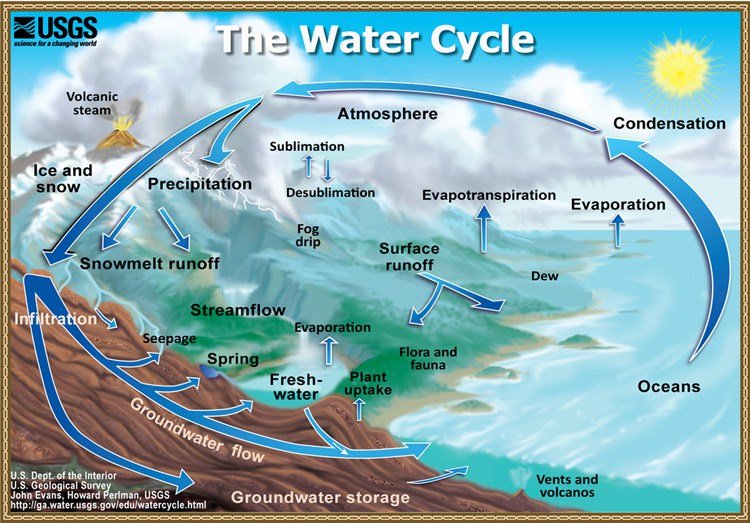
Since it’s always moving, what happens when it gets to an incision? It dries, rather than continuing to sheet beneath the surface. This dehydrating effect begins to expand. In some cases, especially where the water table is close to the surface, it can be reduced by several feet. If there is too much pumping of groundwater, it can drop by hundreds of feet (as evidenced by the reduction of the Ogallala Aquifer, especially in west Texas).
Remember how farmers in swampy areas or bogs will cut through them and continue the cut downhill in order to drain them? This is the same drying effect these incisions have, except it results in unhealthy desiccation in areas that are not able to maintain enough moisture, leading to erosion.
In addition, the loss of organic material in the soil renders it less capable of storing water. For every 1% increase in organic material in the top foot of soil, each acre is able to store 20,000-25,000 gallons of water. So if you can get a soil with only 1-2% organic material to increase up to 6-7% (very realistic), you can increase the top foot of soil’s water storage capacity by over 100,000 gallons per acre (about 150,000 liters per hectare).
There are efforts to help relieve the pain, perhaps most notably the Mud and Guts project. This group is doing some amazing work on the opposite end of the island, where's even drier and more impoverished than where I was, from what I've been told. Here's the trailer to the movie that documents their effort.

Mud and Guts: The Search for Water in La Gonave, Haiti from Justin Greiman on Vimeo.
This work is much needed, because it brings relief now. But, in light of the island's hydrology, it's concerning. How long will the groundwater last when it may not be replenished sufficiently from the top of the island down? My concern is that these wells will eventually run dry. Or, if they're below sea level, that the ocean water will fill the void, rendering the water undrinkable. However, if the island can be set on a path of regeneration from the top down, these wells will be continuously recharged.
Island Effect
It's fascinating how all of these factors will also affect rainfall. So the very factors that are making the rain cause so much erosion and drying the island are also diminishing the amount of rainfall that will fall. It’s an odd sort of dance where the very thing that will help bring life to the soil becomes destructive. And the very things that once protected the soil also are contributors to promoting the rain, as well as inhibiting erosion.
Have you ever flown across the ocean and seen how clouds tend to form at the peaks of islands? Notice that they’re sort of like flags, billowing on the windward side of the peaks and sort of dissipating in tails on the leeward side.
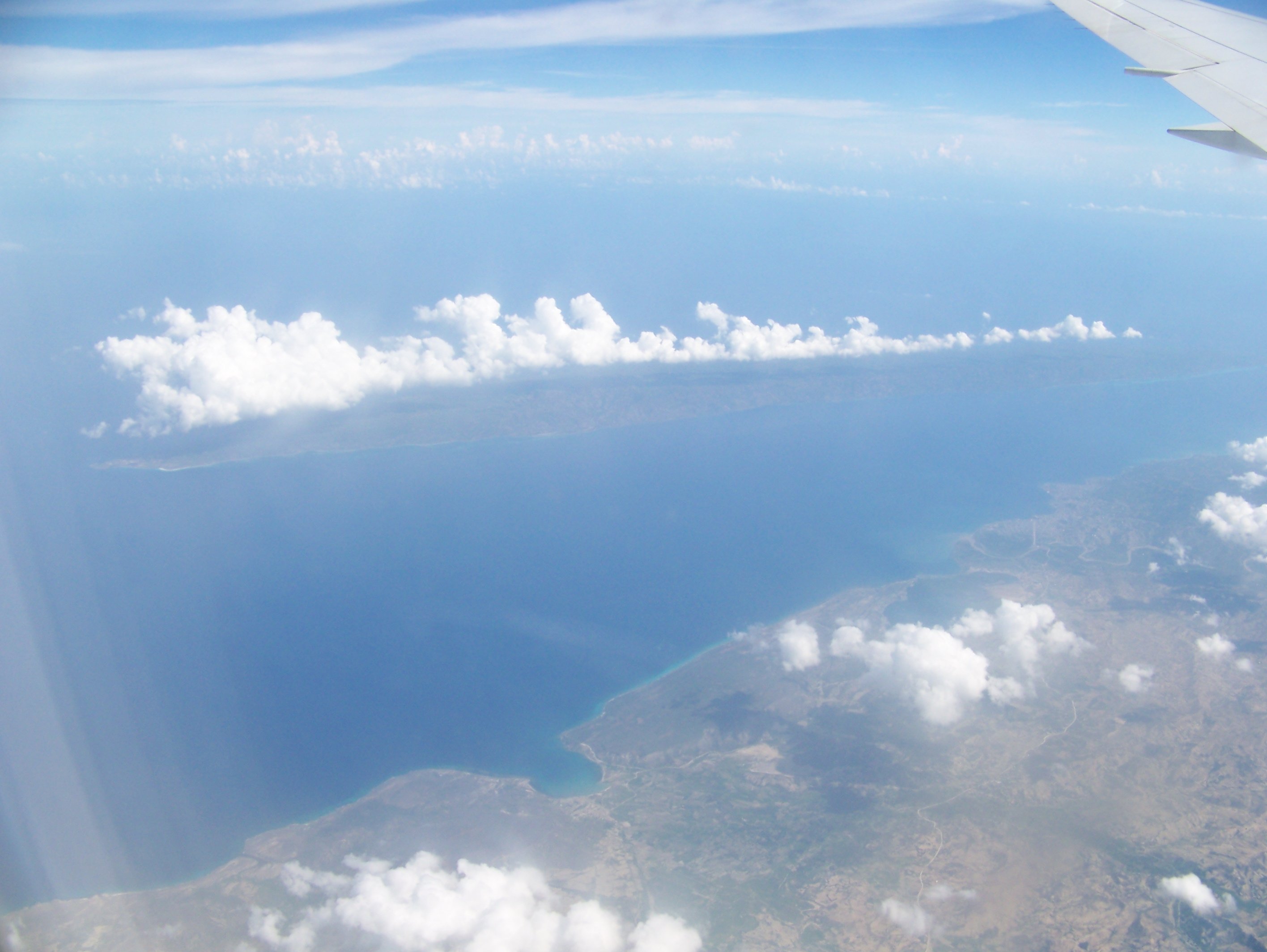
Most people understand enough about the hydrological cycle to know that this is caused by the condensation of moisture as it is compressed against the windward side of the mountain and pushed up into the thinner air of the mountain tops. As it rises, at a certain point the air becomes so saturated that it can no longer hold the moisture, causing rain. As a result we see islands with rainforests on the side from which prevailing winds come and sometimes deserts on the leeward side of the mountain.
What’s often missed is the effect of the trees on the landscape. While it’s true that you wouldn’t want to plant a rainforest tree in a barren desert, in some situations the planting of trees will actually improve the hydrology in their immediate area. There are several reasons for this.
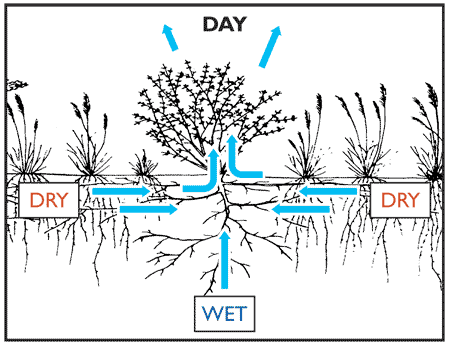
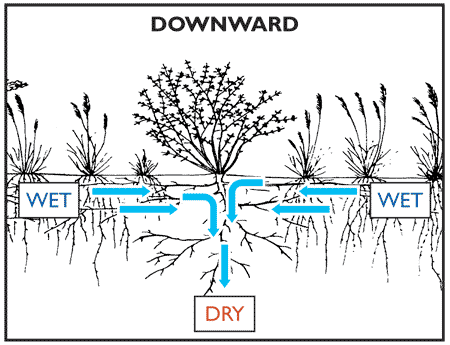
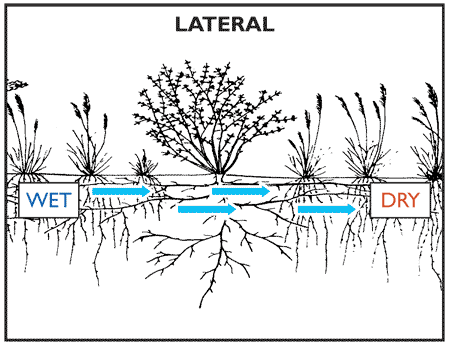
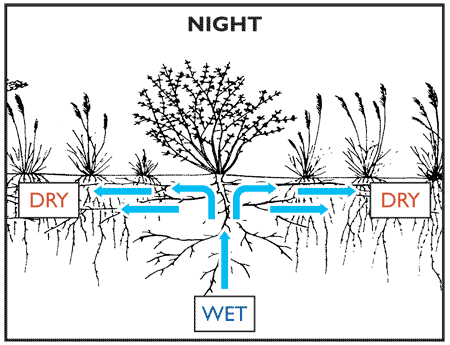
Source
- Some trees perform a function called hydraulic redistribution.
When the ground is saturated, the roots will store moisture deep in its tap root and pull moisture into the tree and release a great deal of it through transpiration (water released through the leaves). This will increase the humidity, which in turn can increase the likelihood of rain. It also can promote the development of moisture on the leaves of nearby flora, helping to keep them hydrated.
When conditions are dry, the tree will begin pulling some of its stored water to help keep the leaves hydrated, again releasing some into the atmosphere. And at night it’ll typically push moisture out to the ends of its shallow roots, helping to hydrate the soil around it. - Have you ever seen the fog or dew catchers in Chile and other parts of the world? These sheets cool at night, causing the moisture in the air to condensate on them and drop into various types of catchment systems or gardens. Even in the driest desert in the world, the Atacama, these have proven to be very effective.
We can think of trees the same way. As the moist breeze comes up the mountains from the ocean, the trees will catch the fog, even as they’re adding to it through transpiration. This will result in the dew dropping to the ground as well as increased rainfall. - Related to this is how the trees minimize ground evaporation. This is primarily done in two ways.
The first is fairly obvious, as the trees protect the soil from wind and sun. This helps maintain a more even soil temperature as well as cut down on evaporative effects.
The second is that the tree canopy can serve as a buffer to help trap evaporation at the ground level. When the moisture rises, it will often condense on the trees, or simply form a foggy layer along the ground that is held in place largely by the canopy. This helps to keep the soil and understory plants hydrated. - The organic material that trees drop protects the soil as well as helps build it up. As leaves, fruit and branches fall, they form a layer that shields the soil from erosion while helping to trap moisture. As these break down, they hold even more moisture, add nutrients to the soil and promote greater subterranean biological diversity.
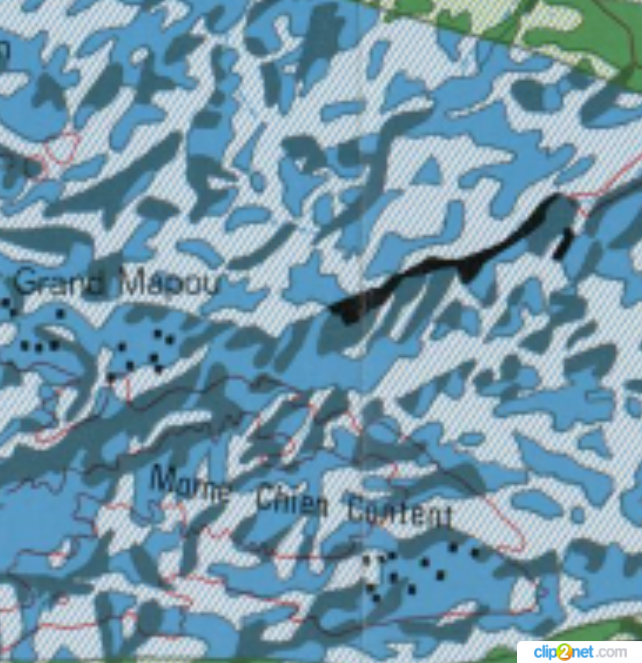
Source PDF
Developing a Plan
Learning this much is just part of the challenge though. What about design? Do we just put some trees in the ground and call it good?
There is a lot that goes into a holistic design, with various aspects needing to be considered. Climate, water, prevailing winds, sun angle, soil conditions, personal input/desires/goals, contour, buildings, fencing, economy, energy and other factors influence these decisions.
We'll explore this further as the series develops.
Steemin' on,
Another Joe

Email notifications
Facebook
Twitter
Note: This is a real life situation that I am attempting to help remedy. Everything is true and I'm sharing my research and experience for readers to understand what's happening, why and a possible solution. While I can envision a regenerative holistic solution, I do not have the resources to just make it happen. If I can raise enough funds I will go to Haiti in October to talk with some people about their biodigester design, meet with landowners on La Gonâve to discuss the idea with them and also meet with lawyers to help me understand what's involved, before drafting a more detailed solution. But I'll spell some of my ideas out here as we progress, and look forward to gaining some interest, insights and perhaps collaboration from anyone who is interested.
